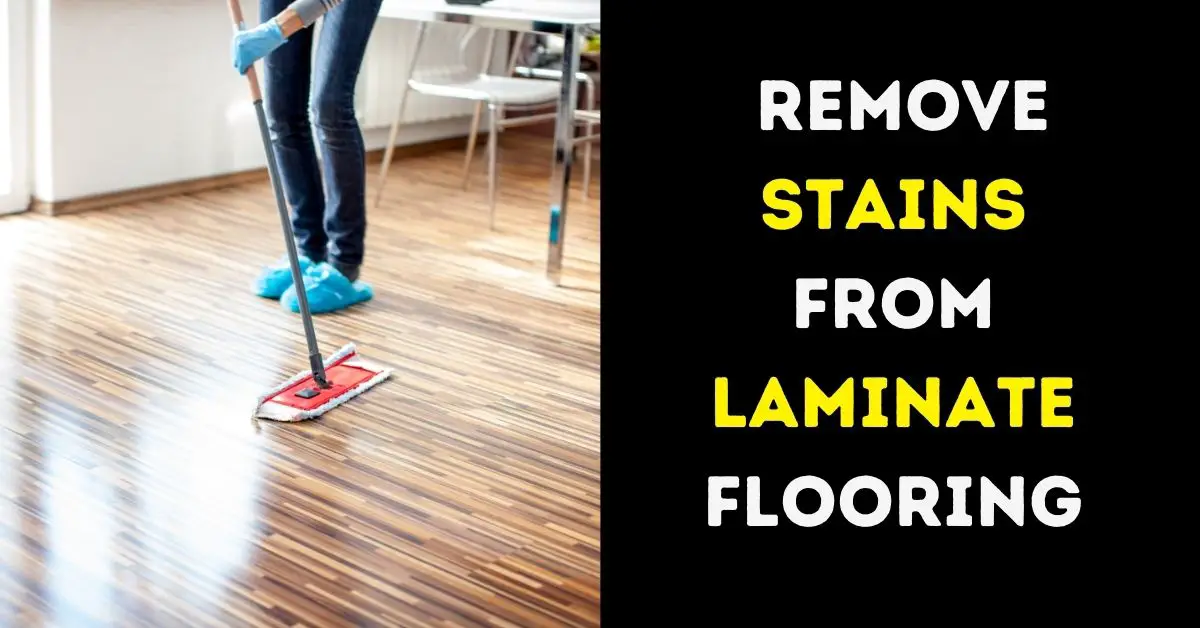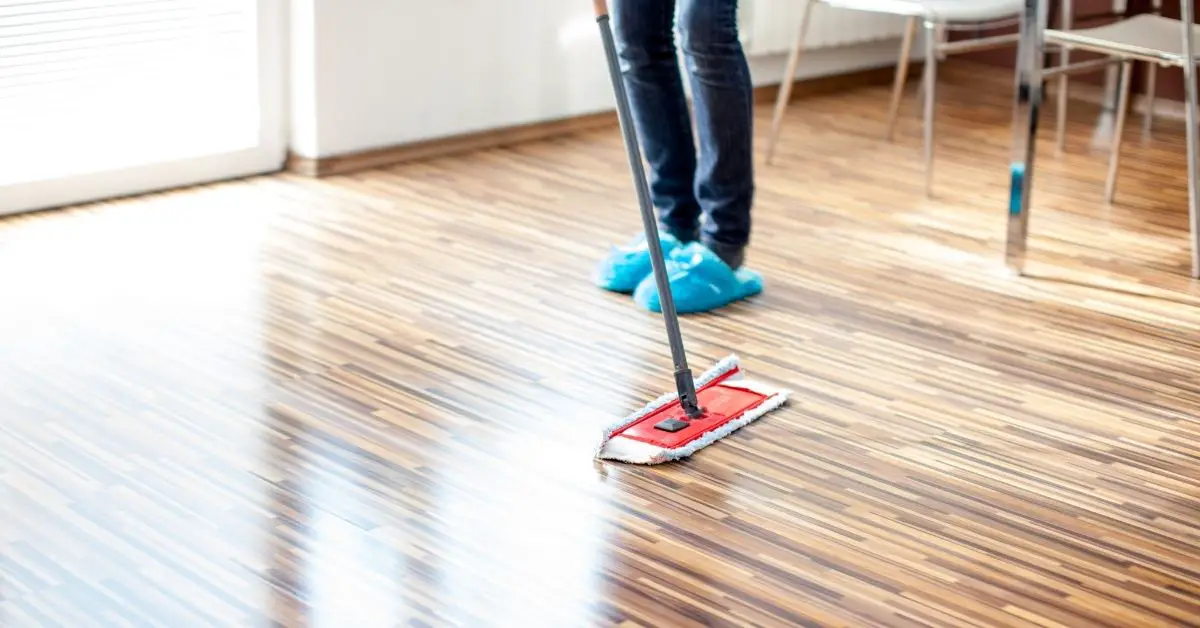
Laminate flooring is a popular choice for many homeowners due to its affordability, durability, and attractive appearance.
However, despite its numerous advantages, laminate flooring is not entirely immune to stains. Whether spilled wine, pet accidents, or ink smudges, stains can mar the beauty of your laminate flooring if not handled promptly and effectively.
In this article, we will discuss the steps to remove stains from laminate flooring and offer valuable insights into preventing stains in the first place.
7 Common Stains on Laminate Flooring

1. Food and Beverage Stains
These stains are frequent guests in dining areas and kitchens. Spilled coffee, wine, or sauces can leave unsightly marks and may become stubborn stains if not treated promptly.
2. Pet Stains
Accidents happen, especially if you have pets at home. Urine and pet-related messes can stain and produce odors that linger if not dealt with correctly.
3. Ink Stains
From children’s art projects to office mishaps, ink stains can happen anywhere. Ink can penetrate the laminate’s surface and be challenging to remove without the proper technique.
4. Water and Moisture Stains
Water spills, moisture seepage, or even the aftermath of mopping with excess water can lead to moisture-related stains. These stains may manifest as warping, discoloration, or a cloudy film on the surface.
5. Dirt and Grime
Over time, dirt and grime can accumulate on your laminate flooring, leaving a dull and dingy appearance. These stains might not be as noticeable as food or ink, but they can still detract from the floor’s beauty.
6. Scuff Marks
High-traffic areas are prone to scuff marks from shoes or furniture. These marks are usually caused by friction, making the flooring look worn.
7. Oil and Grease Stains
These stains often occur in kitchens and garages. Cooking oil or automotive grease can be tricky to remove and may require special attention.
Steps To Remove Stains from Laminate Flooring
1. Blot Spills Immediately
For liquid spills, such as juice or wine, use a clean cloth or paper towel to blot up the liquid as soon as possible to prevent it from seeping into the laminate.
2. Sweep or Vacuum
Begin by removing loose dirt and debris from the floor’s surface. Use a soft-bristle broom or a vacuum cleaner with a soft brush attachment.
3. Mix a Cleaning Solution
Fill a bucket with warm water and add a few drops of mild dish soap. Avoid using too much soap, as it can leave a sticky residue.
4. Dampen a Cloth or Mop
Dip a soft cloth or mop into the soapy water and wring it out so it’s damp but not dripping wet.
5. Clean the Stain
Gently rub the stained area with a damp cloth or mop. Avoid excessive moisture on laminate flooring, as it can damage the core.
6. Rinse
Rinse the area with clean water using a separate damp cloth or mop to remove any soap residue.
7. Dry Thoroughly
Wipe the area with a dry microfiber cloth to ensure it’s completely dry. Water left on laminate can cause damage over time.
What Should You Not Clean Laminate Floors With?
Cleaning laminate floors is essential to maintain their appearance and longevity, but it’s equally important to avoid using certain cleaning products and methods that can damage the flooring. Here’s a list of things you should NOT clean laminate floors with:
1. Excessive Water
Laminate flooring is not designed to withstand excessive moisture. Avoid using a soaking wet mop or leaving water puddles on the floor, as this can cause warping, swelling, or delamination of the planks.
2. Steam Cleaners
Steam cleaners can force moisture into the seams of laminate flooring, leading to water damage. It’s best to avoid using them on laminate floors.
3. Harsh Chemicals
Avoid using abrasive or acidic cleaning agents such as bleach, ammonia, or vinegar. These can strip away the protective top layer, fade the finish, or cause discoloration.
4. Abrasive Scrubbers
Scrubbing with steel wool, abrasive scrubbing pads, or harsh brushes can scratch the surface of the laminate and make it look dull and worn.
5. Furniture Polish and Wax
Products designed for wood floors, like furniture polish or wax, should not be used on laminate. They can create a slippery surface and leave a residue that attracts dirt.
6. Soapy Residue
Excess soap can leave a sticky film on laminate floors, making them look dull and attracting more dirt. Always rinse thoroughly when using any cleaning solution.
7. Oil-Based Cleaners
Oil-based cleaners can make laminate floors slippery and attract dust and dirt. Stick to water-based or laminate-specific cleaning products.
8. Vinegar and Baking Soda Mix
While vinegar and baking soda are often used for cleaning, this combination can be too abrasive for laminate flooring and may damage the surface over time.
9. Hard Vacuum Brushes
When using a vacuum cleaner, avoid using a vacuum with hard, beater bar-style brushes. These can scratch and wear down the protective layer of the laminate.
Finally
Knowing how to remove stains from laminate flooring effectively can save you both time and money while preserving the beauty of your floors.
Remember that quick action is key to successful stain removal. The sooner you address a stain, the easier it is to eliminate. Always start with the gentlest cleaning methods and gradually escalate to more robust solutions as needed to avoid damaging your laminate flooring.
Furthermore, prevention is equally important. Implementing preventive measures such as using rugs and mats, following a regular cleaning routine, and protecting your floors from heavy furniture can significantly extend the lifespan of your laminate flooring.
